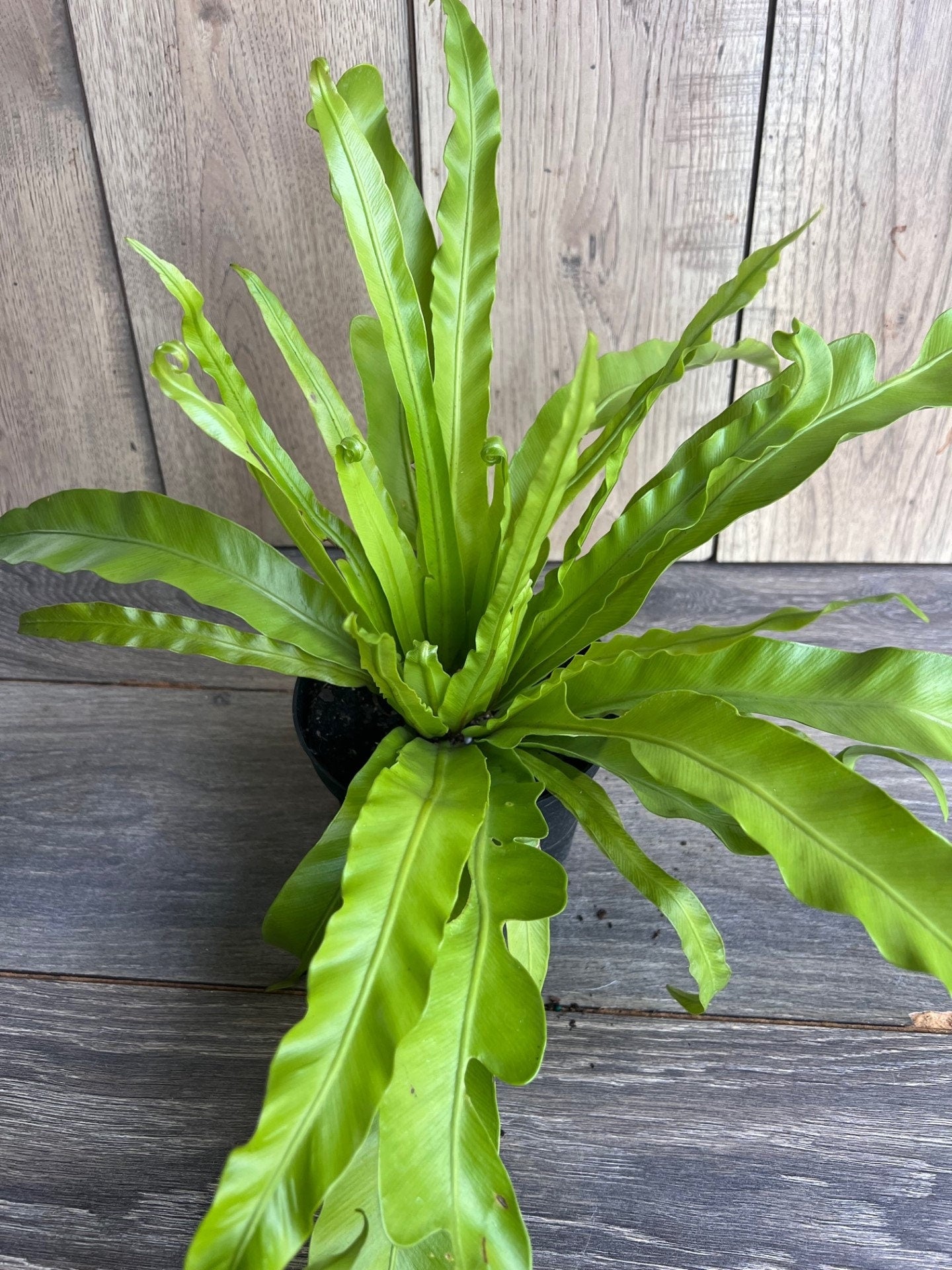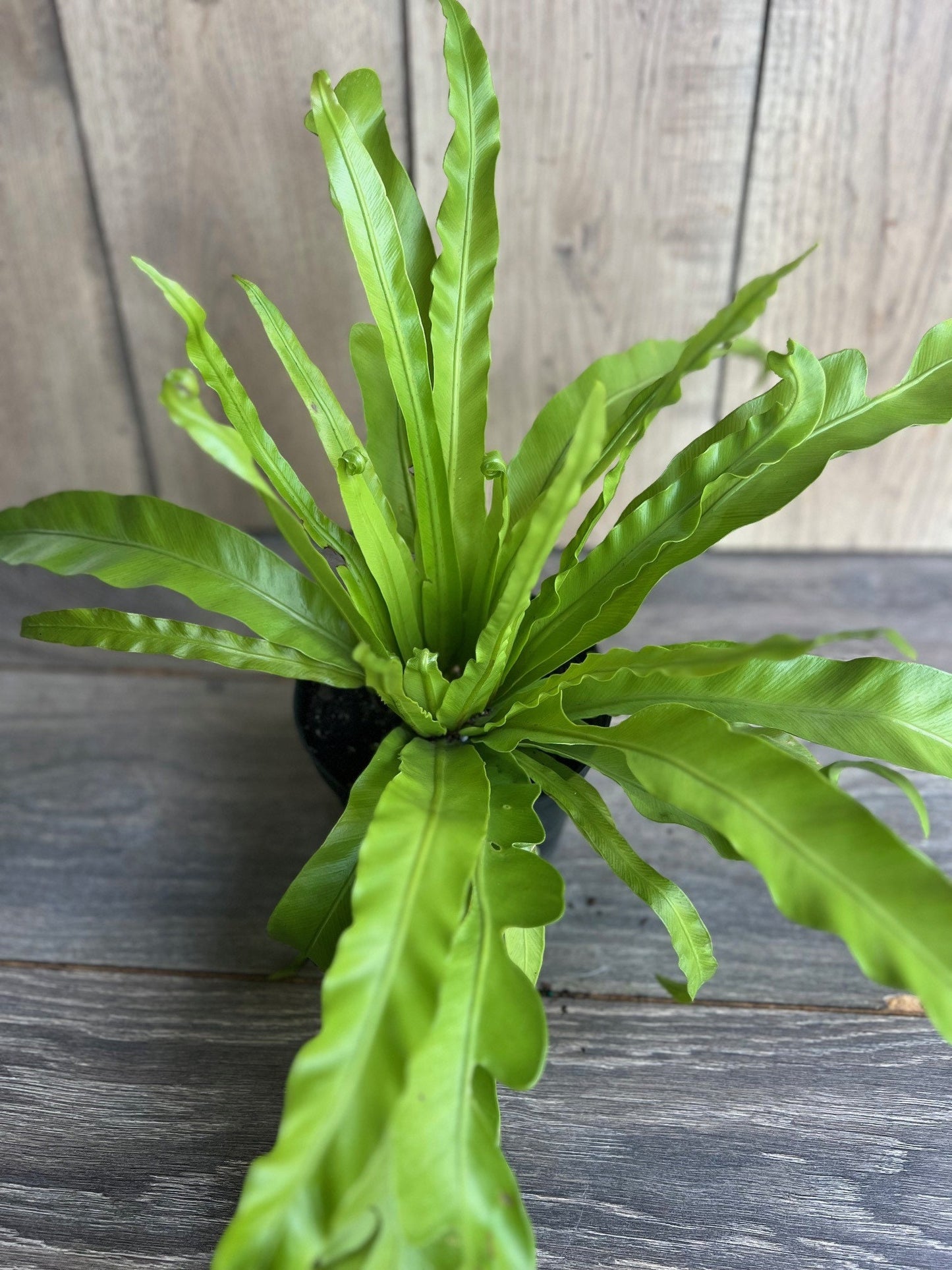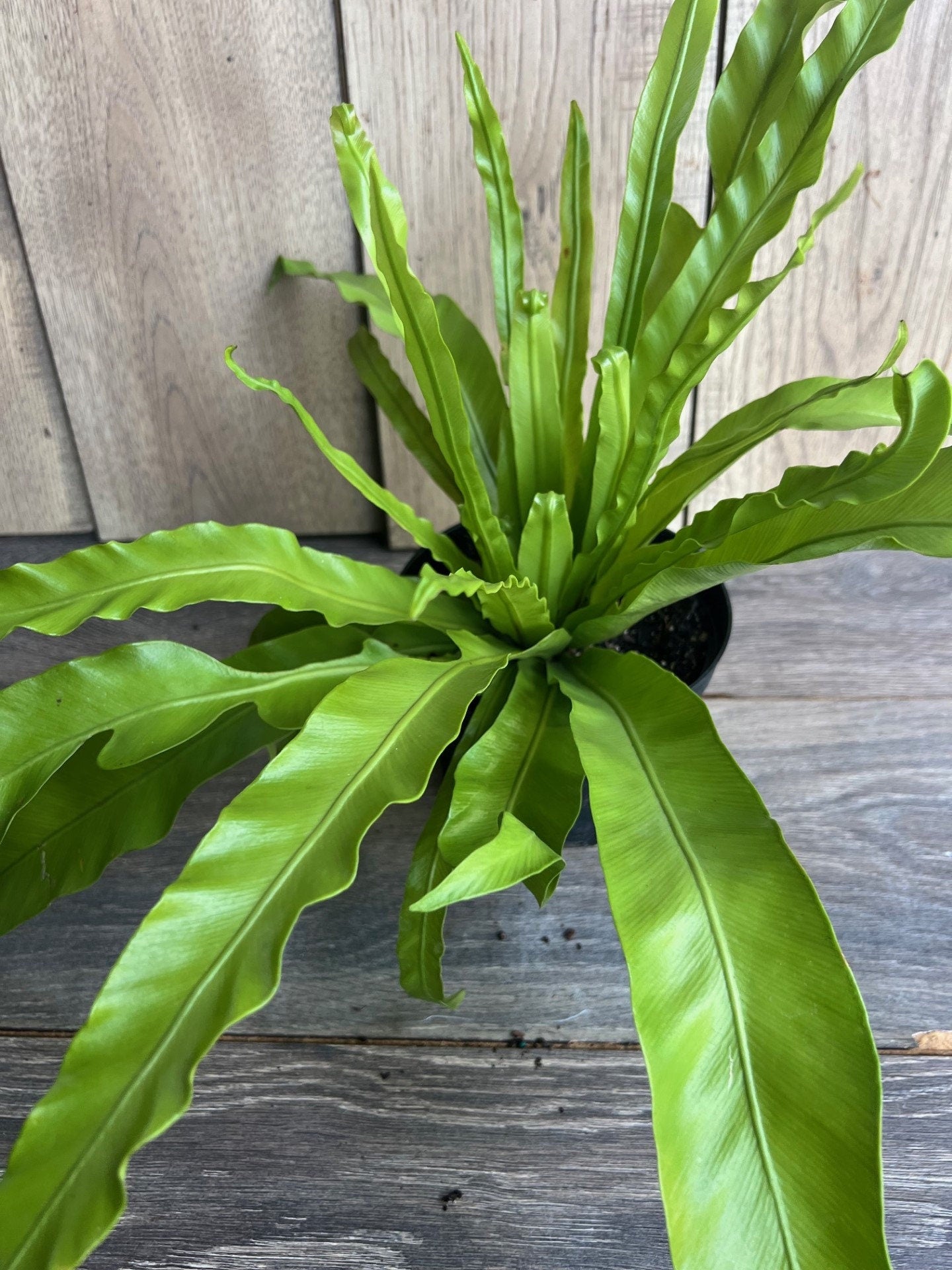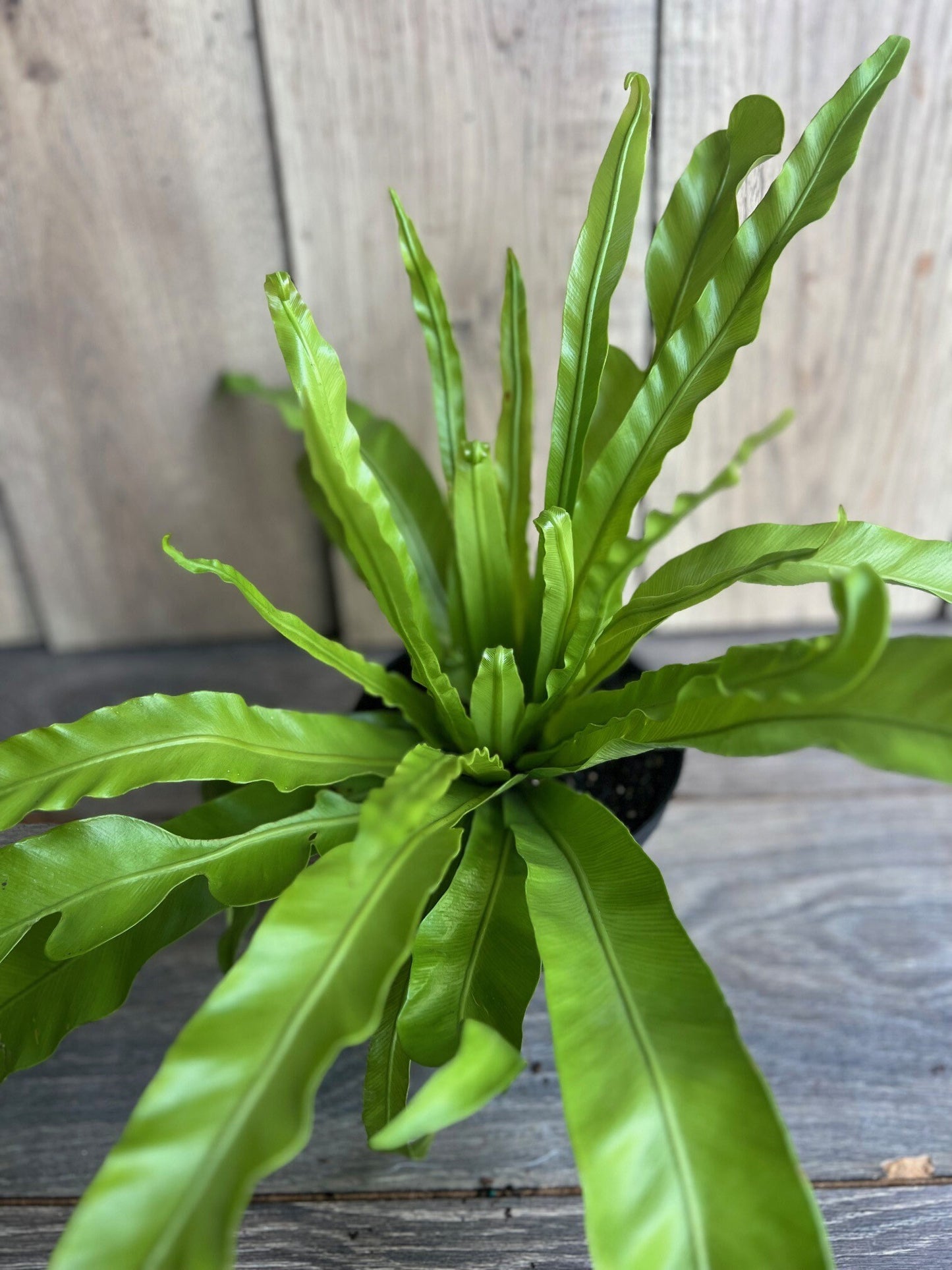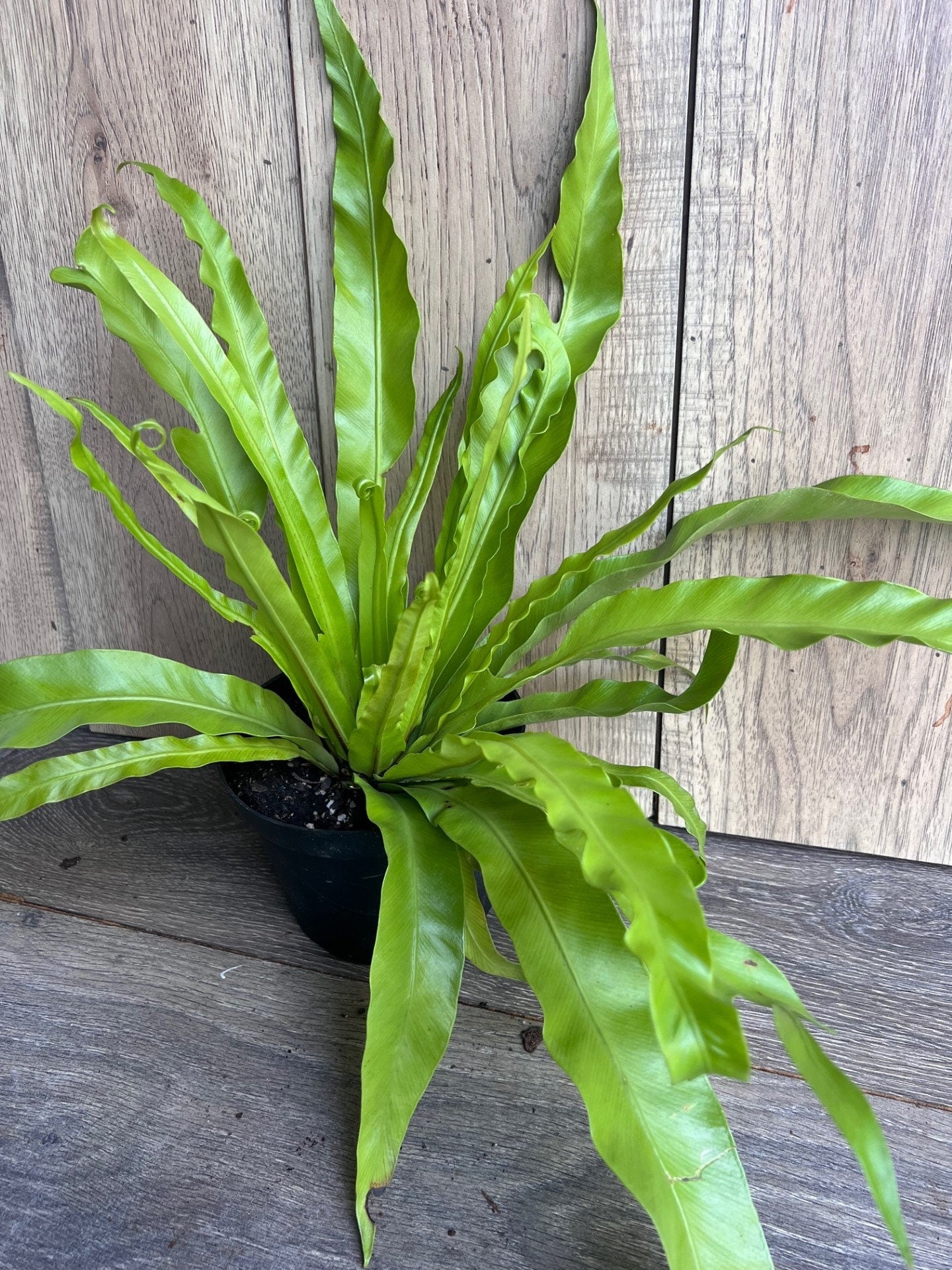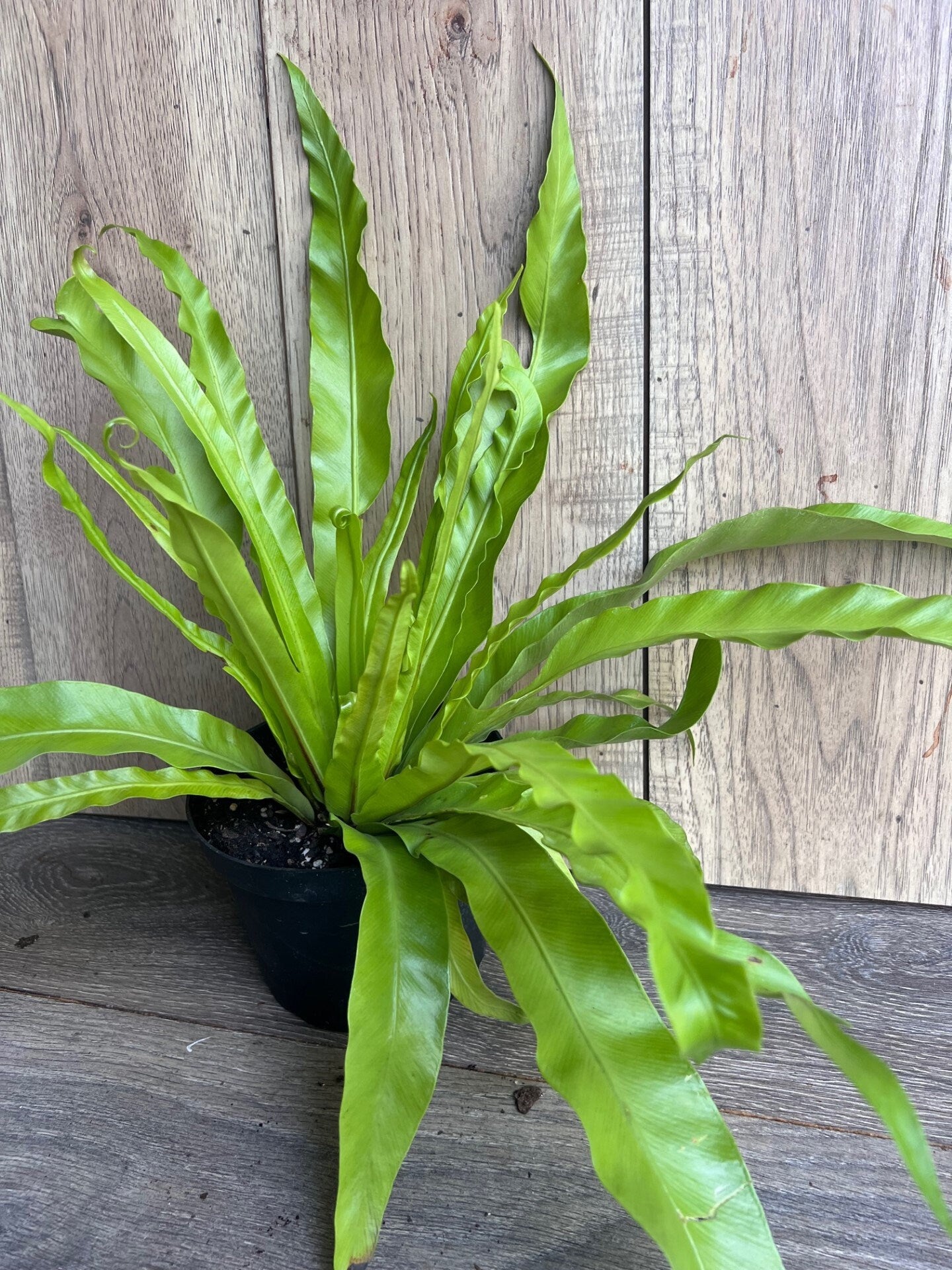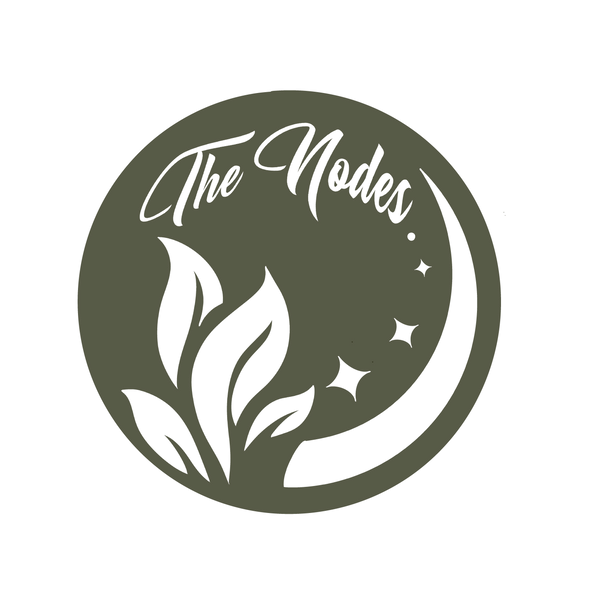Asplenium Bird Nest Fern in 6" pot
Asplenium Bird Nest Fern in 6" pot
Couldn't load pickup availability
Asplenium Bird Nest Fern (Asplenium nidus)
The Asplenium Bird Nest Fern, commonly known as the Bird Nest Fern, is a striking, tropical houseplant known for its unique, wavy, and arching fronds that resemble a bird's nest, hence its name. Its glossy, bright green foliage and elegant form make it a favorite choice for indoor spaces. Easy to care for, the Bird Nest Fern thrives in low to medium light with proper humidity, adding a touch of lush greenery to homes, offices, and other indoor spaces.
You will receive 1 Asplenium Bird Nest Fern in a 6" pot, similar to the pictures.
Light Requirements
- Prefers low to medium, indirect light.
- Avoid direct sunlight, which can scorch its delicate fronds.
- Thrives in filtered light or in spaces with bright, indirect conditions.
- Avoid overly dark spaces, as it can stunt growth.
Watering
- Keep the soil consistently moist but not soggy. Water when the top 1-2 inches of soil feel dry.
- Ensure good drainage to avoid root rot.
- Signs of Overwatering: Yellowing fronds or mushy spots.
- Signs of Underwatering: Brown or crispy fronds.
Temperature & Humidity
- Prefers temperatures between 60°F and 75°F (15°C to 24°C).
- Avoid exposing it to cold drafts, temperatures below 50°F (10°C), or sudden temperature changes.
- Thrives in moderate to high humidity levels.
- Increase humidity by using a humidifier or placing a humidity tray beneath the pot.
- Mist the plant regularly, but ensure the fronds don’t stay wet for too long to prevent fungal problems.
Soil & Repotting
- Prefers well-draining, organic potting soil. A mix of peat moss, perlite, and potting mix works well.
- Maintain a slightly acidic to neutral pH (5.5 to 7.0).
- Repotting: Every 1-2 years or when outgrowing the pot. Select a pot with drainage holes to prevent water buildup.
Fertilizing
- During the spring and summer months, fertilize every 4-6 weeks with a diluted, balanced, water-soluble fertilizer (e.g., 10-10-10).
- Reduce or stop fertilization in fall and winter, as the plant's growth slows.
Pruning & Maintenance
- Remove any dead or damaged fronds with clean, sharp scissors to maintain a neat appearance.
- Dust can accumulate on fronds; wipe with a soft, damp cloth to keep them healthy and efficient at photosynthesis.
Pests & Problems
-
Common Pests:
- Spider mites
- Mealybugs
- Aphids
-
Inspect the fronds regularly for signs of pests. Treat infestations with neem oil or insecticidal soap.
-
Yellow or Brown Fronds: These may indicate overwatering, underwatering, or low humidity. Adjust your care routine accordingly.
Toxicity
- The Asplenium Bird Nest Fern is non-toxic to pets, making it a safe choice for homes with cats and dogs.
Propagation
-
By Division:
- Divide during repotting by separating sections of the plant that have their own roots and fronds. Replant each section into fresh soil.
The Asplenium Bird Nest Fern is a tropical beauty that adds a unique, elegant look to any indoor space. With proper care—moderate humidity, low to medium indirect light, and consistent moisture—it thrives easily, making it a low-maintenance, air-purifying houseplant.
Share
